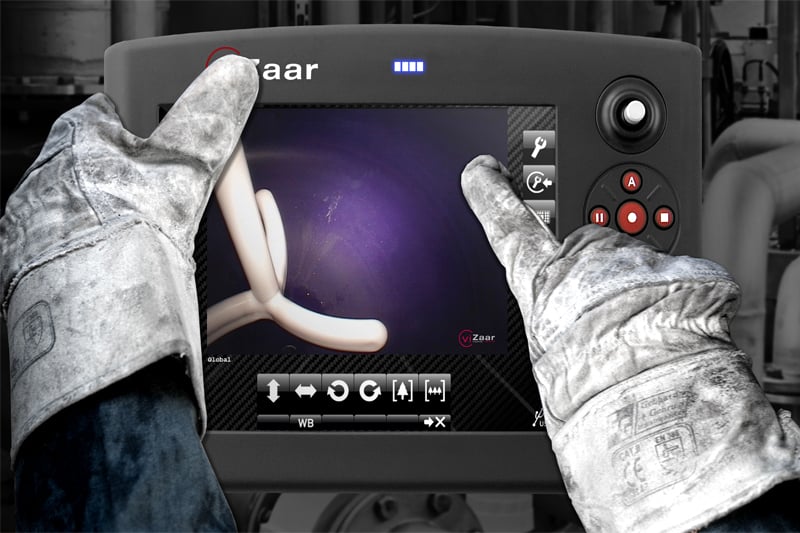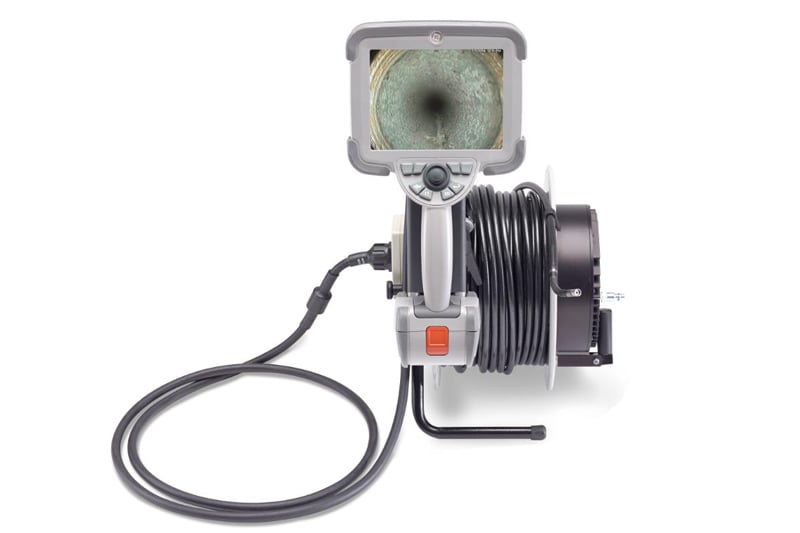What Is Remote Visual Inspection Equipment?

In order to learn more about remote visual inspection (RVI) equipment, it’s a good idea to explore the wider concept of RVI itself first as this will provide the framework for a discussion on the various equipment types and the nature of the inspection tasks that they perform.
Broadly speaking, RVI is a term that characterises the non-destructive inspection of areas that would otherwise be visually inaccessible or unsafe for human intervention. Without it, parts or whole units would have to be modified or even disassembled entirely in order for inspectors to access the area of interest and see what’s going on.
RVI is used for many different reasons including quality control, blockage inspection, the location of defects and foreign object search and retrieval and the assessment of plant health, safety and operability with applications ranging from simple pipe blockage inspections to complex and advanced inspections of assets such as jet turbine engines. And whilst RVI doesn’t enable any information about defect depth, it is an important technique for identifying the geometry of defects and in some instances for providing measurements about damage or defects.
Although it has been around since the seventies, huge technological advances and innovations have been made over the years and the highly specialised and the highly capable instruments of today have elevated equipment capabilities to a whole new level. It’s now possible for micro cameras to access holes as tiny as two millimetres, travel up to 3 kilometres along pipelines and produce crisp, vivid images from the deepest, darkest recesses of underground sewers which go to show how far the RVI industry has advanced.
Remote visual inspection equipment typically comprises borescopes, video borescopes, fibrescopes, push rod cameras, remotely operated pan-tilt-zoom (PTZ) cameras, robotic crawlers and drones – which often come with specialised tooling, features and intuitive software for optimum data management and analysis which enable the collection of clear, concise visual data (still or video) in real-time.
Some reasons why and where RVI equipment is used:
- Checking new piping installations prior to commissioning
- Helps avoid costly shut-downs
- Enables planned, preventative maintenance
- Ensures the ongoing health and safety of plant and machinery
- Locates flaws, defects, faults or deformations in enclosed, inaccessible parts like turbines and combustion chambers
Many RVI instruments have complex optical and digital imaging equipment and advanced illumination fitted into their compact tips which enable the production of high-resolution images which are brilliantly clear and true-to-life. And although highly specialised and complex, these devices are tough, durable and surprisingly easy-to-use.
From plumbers to municipal sewer inspectors, aircraft maintenance personnel to chemical plant operators, mining companies to the construction industry – the scope and variety of users of RVI equipment is enormous and there’s no doubt that with the ability to remotely inspect deep, dark, hostile and inaccessible places, the world is a safer place for everyone.
If you’d like to discuss any aspect of remote visual inspection, you should talk to specialist equipment and technology company, Nexxis. We have worked with many different industry sectors across Australia and internationally, and we offer an extensive range of quality, reliable RVI equipment for hire or for sale, all backed up by proven technical expertise, strong customer support and a genuine focus on value-driven solutions.


